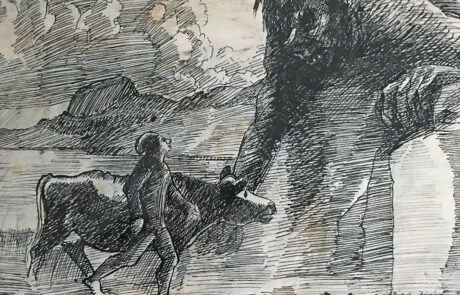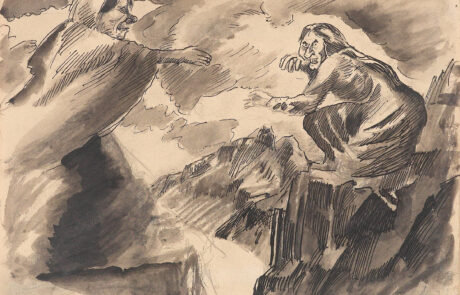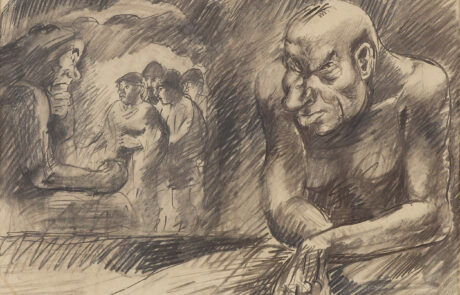
Once upon a time
Ásgrímur Jónsson 1876–1958
March 2 – October 15, 2019
Ásgrímur Jónsson was one of the pioneers of Icelandic visual art. He started his artistic training in Copenhagen in 1897 and held his first show in Iceland in 1903. From the outset Ásgrímur’s art focussed on Icelandic nature, but before long he started working with themes from Icelandic folk and fairy tales, which had never been illustrated before. He had a special interest in tales of trolls, and in addition he illustrated stories of elves, ghosts and outlaws, as well as tales of magic and Christian parables. Ásgrímur had grown up with such stories in south Iceland, and no doubt his choice of subjects was informed by his background in Icelandic folk culture and 19th-century romantic nationalism; but he was also influenced by trends in Nordic art at the time, especially symbolism.
Ásgrímur’s oldest folklore works which are dated are oil paintings made in 1900. The artist first exhibited such pieces in Reykjavík in 1905: a total of eight oils, including The Night Troll at the Window. The works were praised for their imagination and lyricism. In the early decades of the 20th century Ásgrímur’s folklore images were published in readers for children and youngsters – the first volume appearing in 1907. His pictures thus gained currency among young Icelanders. Articles in the press about these early works by Ásgrímur express satisfaction that for the first time an Icelandic artist has undertaken interpretation of folktales. The artist’s presentation of the appearance of elves and trolls seems to have met with widespread approval, and thus he appears to have succeeded in capturing images of such creatures as imagined by Icelanders in general. And he was a defining influence on those who came after him.
The Ásgrímur Jónsson Collection in the National Gallery of Iceland includes nearly 1500 pictures on folk- and fairytale themes, as well as a large number of sketchbooks that span the artist’s entire career. There are few oils, and relatively few watercolours; but the collection includes interesting watercolours from 1914-20 characterised by emotionally-charged use of colour, the subjects of which are generally elves, also known as “hidden people” in Icelandic folklore. The bulk of the folklore images in the collection are drawings of various kinds, the majority from the last 15 years of Ásgrímur’s life. Ásgrímur made illustrations for books of Icelandic folk- and fairytales: the stories are generally dramatic with mystical overtones, and the artist invariably chooses to illustrate the dramatic climax of the story. There are many pictures for every story, as Ásgrímur often drew from the same perspective over and over again, exploring the subject in the most minute detail.
On his death, Ásgrímur bequeathed to the people of Iceland over 2,000 works and 150 sketchbooks, together with his home/studio and its contents at Bergstaðastræti 74, near the National Gallery. The building now houses the Ásgrímur Jónsson Collection, where visitors can explore Ásgrímur’s home and his art.
Ásgrímur’s aunt, Bjarnveig Bjarnadóttir, laid the foundation for LÁ Art Museum in 1963, when she generously donated several artworks to the people of Árnesinga County. In that collection are 19 artworks by Ásgrímur, of which three are pictures on folk- and fairytale themes that can be seen here.




